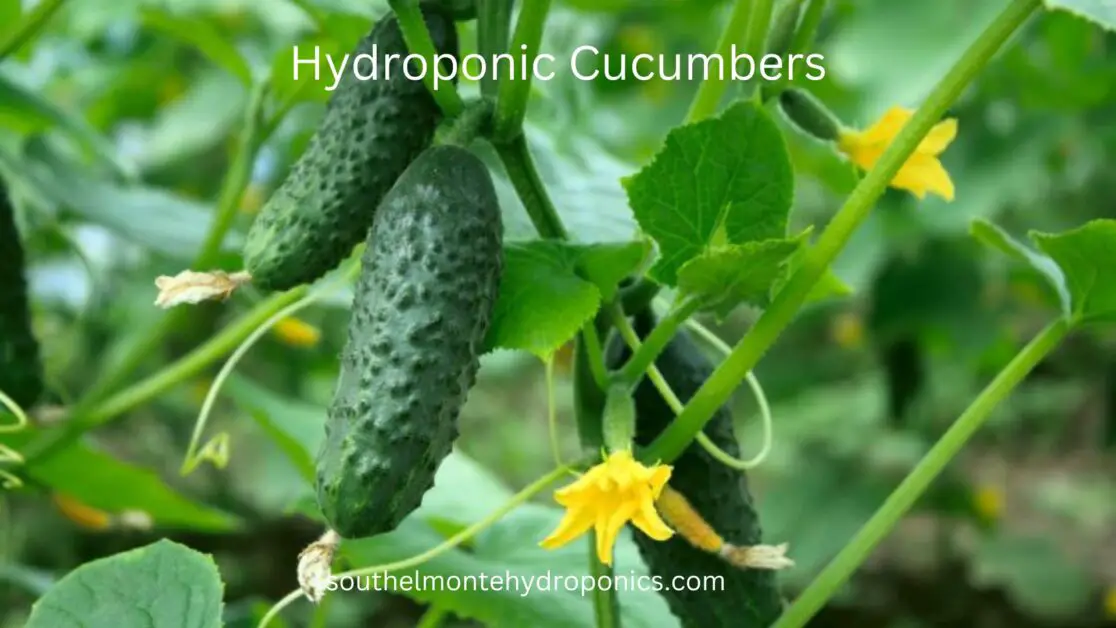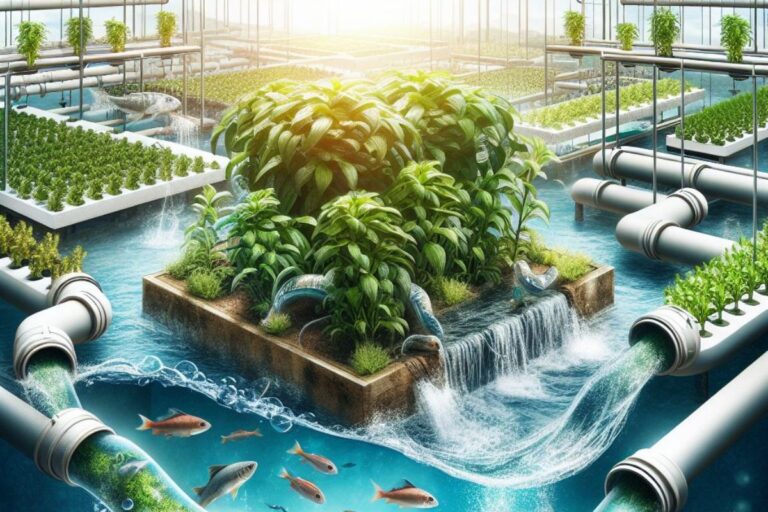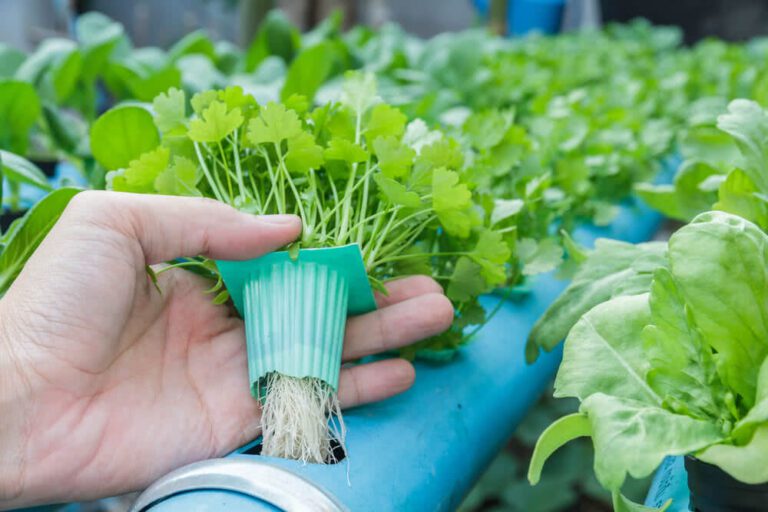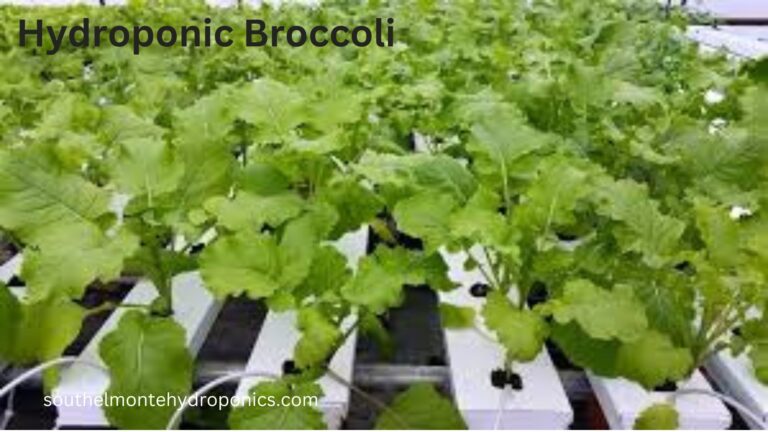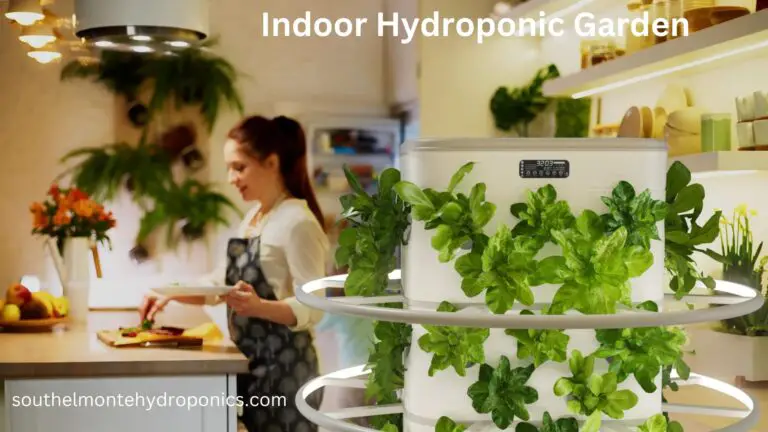Hydroponic Cucumbers: How to Grow Fresh and Juicy Cucumbers in Hydroponics in best way
Table of Contents
Understanding the Benefits of Hydroponic Cultivation for Cucumbers: Hydroponic Cucumbers
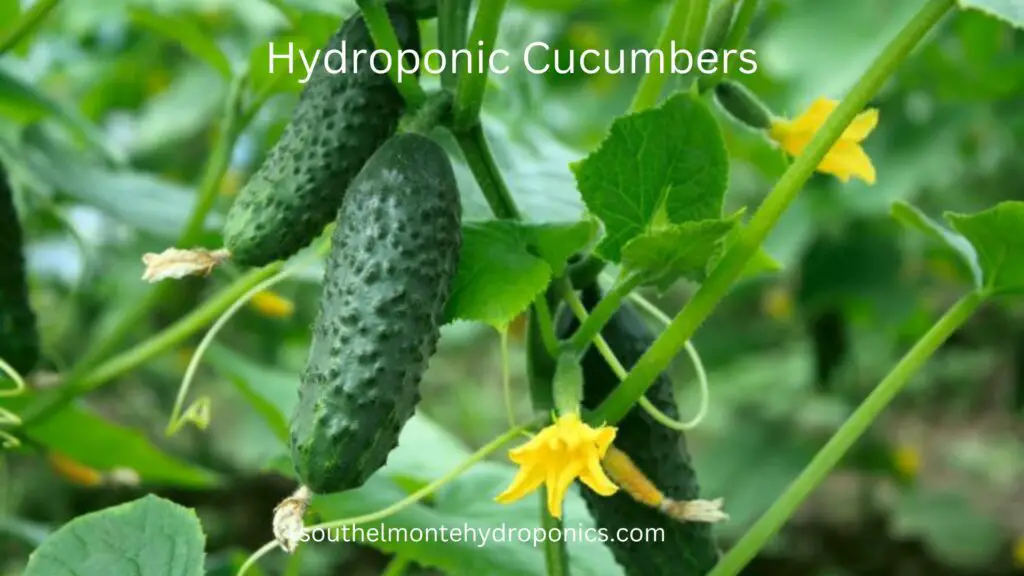
Hydroponic cultivation offers numerous benefits for the cultivation of cucumbers. One of the main advantages is the ability to grow Hydroponic Cucumbers all year round, irrespective of the external climatic conditions. This is particularly beneficial for regions with harsh winters or limited space for traditional gardening. In a hydroponic system, the controlled environment allows for optimal growth and development of cucumber plants, resulting in higher yields and healthier produce.
Another advantage of hydroponics is the efficient use of resources. Traditional soil-based cultivation often requires large amounts of water, which can be wasteful and unsustainable. In contrast, hydroponic systems utilize a recirculating nutrient solution, resulting in significant water savings. Additionally, the precise control over nutrient delivery in hydroponics ensures that Hydroponic cucumbers receive the necessary nutrients in the right amounts, leading to enhanced growth and productivity.
Furthermore, hydroponic cultivation minimizes the risk of soil-borne diseases and pests that can harm cucumber plants. By eliminating soil from the equation and maintaining a clean and sterile growing environment, hydroponics reduces the chances of pathogens and pests infesting the crop. This not only reduces the need for harmful pesticides but also promotes healthier and disease-free Hydroponic cucumbers.
Overall, hydroponic cultivation offers a compelling solution for cucumber production, providing consistent yields throughout the year, efficient resource utilization, and improved plant health. As more gardeners and farmers recognize these benefits, the popularity of hydroponics continues to rise, revolutionizing the way Hydroponic cucumbers and various other crops are grown.
Selecting the Right Varieties for Hydroponic Hydroponic Growth
Cucumber cultivation through hydroponics offers numerous advantages, including increased yield, higher quality produce, and a reduced risk of soil-borne diseases. However, not all cucumber varieties are well-suited for hydroponic growth. When selecting the right cucumber varieties for your hydroponic setup, it is crucial to consider several key factors.
First and foremost, choose cucumber varieties that are known for their compact growth habit and high productivity. Compact varieties are better suited for hydroponic systems as they require less space while still producing an abundant harvest. Additionally, look for cucumber varieties that are disease-resistant, as this will help mitigate the risks associated with soil-borne pathogens commonly found in traditional soil-based cultivation.
Another important consideration is the cucumber variety’s compatibility with hydroponic conditions. Some cucumber varieties may have a more vigorous vine growth, which can be challenging to manage within the limited space of a hydroponic system. Opt for bush-type cucumber varieties that exhibit a more controlled growth pattern, making them easier to support and manage throughout the growing season.
By carefully selecting cucumber varieties that are compact, disease-resistant, and compatible with hydroponic conditions, you can set yourself up for success in your hydroponic cucumber cultivation. In the following sections, we will delve deeper into creating an ideal growing environment and choosing the appropriate hydroponic system to further enhance the productivity and quality of your hydroponic cucumber crop.
Creating an Ideal Growing Environment for Hydroponic Cucumbers
To successfully cultivate Hydroponic cucumbers in a hydroponic system, creating an ideal growing environment is of utmost importance. This involves controlling various factors to ensure optimal growth and yield.
First and foremost, lighting is crucial for hydroponic cucumber cultivation. Hydroponic Cucumbers are a high-light crop and require intense artificial lighting to simulate natural sunlight. Full-spectrum LED lights are a popular choice among hydroponic gardeners as they provide the necessary light spectrum for plant growth and can be adjusted to mimic different stages of plant development. Additionally, it is essential to provide a consistent light cycle of around 12 to 14 hours a day to promote healthy growth.
Another vital aspect of creating an ideal growing environment is maintaining a suitable temperature. Hydroponic Cucumbers thrive in temperatures between 70 to 80°F (21 to 27°C) during the day and slightly cooler temperatures of around 65 to 75°F (18 to 24°C) during the night. It is crucial to monitor and regulate the temperature within the hydroponic system to avoid any extreme fluctuations that could negatively impact the plants’ growth. Using proper ventilation, cooling systems, and insulation can help maintain the desired temperature range.
As we delve further into creating an ideal growing environment for hydroponic cucumbers, we will explore other critical factors such as humidity, air circulation, and nutrient availability. By paying attention to these essential elements, gardeners can maximize their cucumber production and achieve healthy, vigorous plants that yield abundant, flavorful Hydroponic cucumbers.
Choosing the Appropriate System for Hydroponic Cucumber Cultivation
When it comes to choosing the appropriate hydroponic system for cucumber cultivation, there are several factors to consider. First and foremost, it is important to select a system that can support the growth and development of cucumber plants, which tend to have sprawling vines and require adequate support. A trellis or vertical system may be the most suitable option to provide the necessary space for the plants to grow without overcrowding the growing area.
Another crucial factor to consider is the nutrient delivery system. Hydroponic Cucumbers have specific nutrient requirements, and it is essential to choose a hydroponic system that can effectively deliver the necessary nutrients to the plants. Drip irrigation or nutrient film technique (NFT) systems are commonly used for cucumber cultivation as they can provide a continuous supply of the required nutrients. These systems allow for precise control over nutrient delivery, ensuring optimal growth and development of the plants.
In addition to considering the needs of the cucumber plants, it is also important to take into account the available space and resources. Some hydroponic systems require more space and equipment than others. For smaller-scale operations or those with limited resources, a simple and compact system like a deep water culture (DWC) or a nutrient film technique (NFT) system may be a practical choice.
Ultimately, the choice of hydroponic system for cucumber cultivation depends on various factors such as space, resources, and desired plant growth characteristics. By carefully evaluating these factors and considering the specific needs of cucumber plants, growers can select the most appropriate system to maximize productivity and ensure successful cucumber cultivation in a hydroponic setting.
Preparing and Maintaining the Nutrient Solution for Hydroponic Cucumbers
Preparing and maintaining the nutrient solution is a critical aspect of successful hydroponic cucumber cultivation. Nutrient solutions provide the essential elements that Hydroponic cucumbers need to grow, thrive, and produce a bountiful harvest. The composition of the nutrient solution must be carefully balanced to ensure that cucumbers receive the right amount of nutrients at each stage of growth.
To prepare the nutrient solution, it is important to accurately measure the concentration of essential elements, such as nitrogen, phosphorus, potassium, calcium, magnesium, and micronutrients. These concentrations can be determined by conducting a water analysis or by using commercially available nutrient solution formulas specifically designed for cucumber cultivation. It is important to follow the recommended dosage instructions provided by the nutrient solution manufacturer.
Maintaining the nutrient solution involves regularly monitoring its pH and electrical conductivity (EC) levels. The pH level influences the availability of nutrients to the cucumber plants, making it essential to maintain a pH range of 5.5 to 6.5 for optimal cucumber growth. The EC level determines the concentration of nutrients in the solution and should be regularly checked to ensure that it remains within the desired range. Adjustments to the pH and EC levels can be made by adding pH up or down solutions and water to dilute or increase the nutrient concentration, respectively.
In addition to nutrient concentration, it is crucial to replace the nutrient solution periodically to prevent the accumulation of salts and maintain optimal nutrient uptake by the cucumber plants. This process, known as solution replenishment, involves draining the existing solution and replacing it with a fresh one. The frequency of solution replenishment may vary depending on factors such as plant growth stage, temperature conditions, and the size of the hydroponic system.
Properly preparing and maintaining the nutrient solution is essential for ensuring that hydroponic cucumbers receive the necessary nutrients to grow and produce high-quality fruits. By closely monitoring and adjusting the nutrient solution, hydroponic gardeners can optimize cucumber growth, maximize yields, and achieve successful and rewarding harvests.
Seeding and Germinating Hydroponic Cucumber Seeds in a Setup
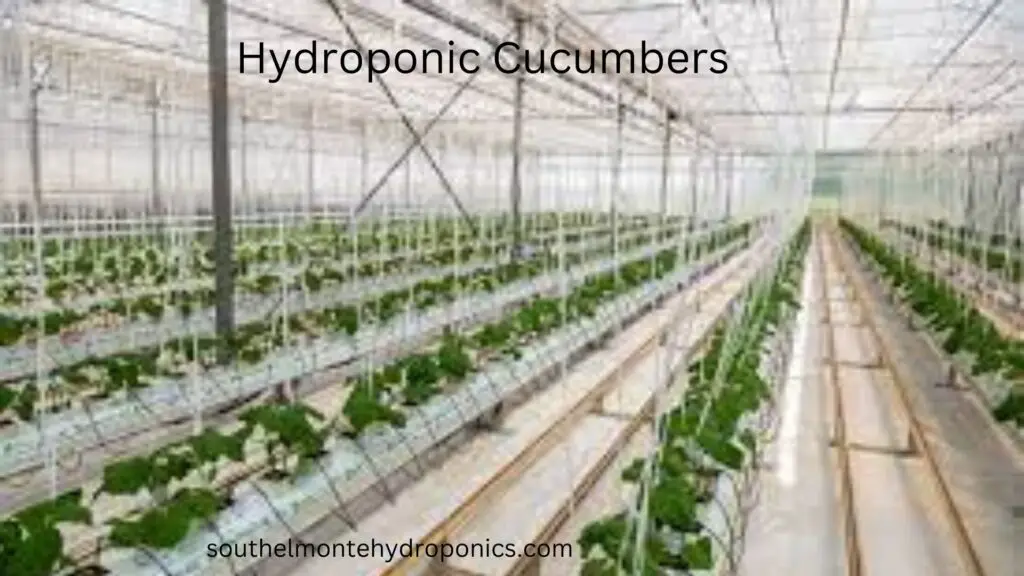
Seeding and germinating cucumber seeds in a hydroponic setup is a crucial step in the cultivation process. To ensure successful growth, it is important to select high-quality cucumber seeds that are suitable for hydroponic systems. Look for varieties that are known for their adaptability to this type of cultivation method. Cucumber varieties with compact growth habits and disease resistance are often preferred for hydroponics.
Once you have your seeds, it’s time to prepare them for germination. Start by soaking the seeds in filtered water for a few hours to help break their dormancy. After soaking, transfer the seeds to a damp paper towel or a germination tray lined with a rapid rooter plug. Keep the environment warm and moist to encourage germination. Maintaining a temperature around 70-80°F (21-27°C) is ideal for cucumber seed germination. Make sure to keep the germination tray covered to retain moisture. Within a week, you should start to see the cucumber seeds sprout and develop their first set of true leaves.
By following these steps, you can ensure a successful start to your cucumber plants in a hydroponic setup. Stay tuned for the next section of our article, which will guide you through the transplanting process and ensuring proper spacing for your cucumber seedlings in hydroponic systems.
Transplanting Seedlings and Ensuring Proper Spacing in Hydroponic Systems
When it comes to transplanting seedlings in hydroponic systems, proper spacing is crucial for the healthy development of cucumber plants. As the seedlings grow, they need sufficient room for their roots to spread and access the nutrients in the nutrient solution. Inadequate spacing can lead to overcrowding, competition for resources, and stunted growth. On the other hand, excessive spacing can result in wasted space and inefficient use of the hydroponic system.
To ensure proper spacing, it is essential to consider the mature size of the cucumber variety you are growing. Different cucumber varieties have varying growth habits and require different amounts of space. For compact bush varieties, a spacing of 12 to 18 inches between plants is generally sufficient. On the other hand, vining or climbing cucumber varieties may require spacing of up to 24 inches between plants, allowing them to spread out and climb trellises or support structures.
When transplanting the seedlings, gently remove them from their nursery containers, being careful not to damage the fragile roots. In the hydroponic system, place the seedlings at the appropriate spacing, ensuring that each plant has enough room to grow without interfering with neighboring plants. Proper spacing also allows for adequate air circulation, reducing the risk of fungal diseases. Monitoring and adjusting the spacing as the plants grow will help you maintain an optimal growing environment for your hydroponic cucumbers.
Here’s a table outlining considerations for growing Hydroponic Cucumbers :
| Aspect | Consideration |
|---|---|
| Cucumber Variety | Choose a cucumber variety suitable for hydroponic cultivation, such as slicing cucumbers or mini cucumbers. |
| Hydroponic System | Select a hydroponic system that accommodates the vining nature of cucumbers, such as nutrient film technique (NFT), deep water culture (DWC), or vertical hydroponics. |
| Growing Medium | Consider using a soilless medium like coconut coir, perlite, or rockwool to provide support and aeration for the plants. |
| Nutrient Solution | Use a balanced hydroponic nutrient solution with adequate levels of nitrogen, phosphorus, and potassium, adjusting as per cucumber growth stages. |
| pH Level | Maintain the pH level of the nutrient solution within the optimal range (5.8 to 6.5) for cucumber nutrient uptake. |
| Temperature and Humidity | Keep the growing environment within the ideal temperature range (75-85°F or 24-29°C) and monitor humidity levels to prevent diseases. |
| Lighting | Provide sufficient light, using high-quality LED grow lights with the right spectrum for the different growth stages of cucumbers. |
| Spacing and Trellising | Plan for sufficient spacing between cucumber plants and implement trellising or vertical support to manage vines and promote airflow. |
| Pollination | Assist in pollination if growing indoors by gently shaking the plants or using a small brush to transfer pollen between flowers. |
| Pruning and Training | Prune lateral shoots and train the vines to control growth, improve air circulation, and concentrate energy on fruit production. |
| Pest and Disease Control | Implement preventive measures such as beneficial insects and regularly inspect for common cucumber pests and diseases. |
| Harvesting | Harvest cucumbers when they reach the desired size, typically 6-8 inches (15-20 cm), and have a firm texture. Use sharp scissors or pruning shears for harvesting. |
| Continuous Monitoring | Regularly monitor nutrient levels, pH, and overall plant health to address any issues promptly and ensure consistent growth. |
Adapting these considerations to the specific requirements of your hydroponic setup will contribute to the successful cultivation of cucumbers
Managing Light and Temperature for Optimal Hydroponic Cucumber Growth

Light and temperature are crucial factors to consider when it comes to achieving optimal cucumber growth in hydroponics. Maintaining the right levels of light and temperature can have a significant impact on the overall health and productivity of your cucumber plants.
First, let’s talk about light. Hydroponic Cucumbers are considered to be high-light plants, meaning they require ample amounts of light for proper growth and development. When grown hydroponically, it is essential to provide the plants with the right intensity and duration of light. Generally, cucumbers thrive under 12 to 16 hours of sunlight or artificial light per day. This ensures that they receive the necessary energy for photosynthesis and subsequent fruit production.
In terms of temperature, Hydroponic cucumbers prefer a warm environment. The ideal temperature range for cucumber growth in hydroponics is between 70 to 85 degrees Fahrenheit (21 to 29 degrees Celsius) during the day and slightly cooler temperatures of around 60 to 70 degrees Fahrenheit (15 to 21 degrees Celsius) at night. Consistency is key, as temperature fluctuations can negatively impact growth and fruiting. Maintaining a stable temperature within this range will promote healthy growth, proper flowering, and a higher yield of cucumbers in your hydroponic system.
Implementing a Proper Support System for Hydroponic Cucumber Vines
Implementing a proper support system is crucial for the successful growth of hydroponic cucumber vines. These plants have vigorous growth habits and produce long, sprawling vines that need support to prevent them from trailing on the ground. Without a support system, the vines may become entangled, making it difficult for the plants to receive adequate light and airflow, and increasing the risk of disease and pest infestation.
There are several options for supporting hydroponic cucumber vines, depending on the scale and design of your system. One common approach is to use trellis netting or string to create a vertical support structure. This allows the vines to climb and spread out, maximizing their exposure to light and airflow. Another option is to install overhead wires or rods that the vines can be trained to grow along. This method provides excellent support and makes it easier to manage the plants during pruning and harvesting. Whichever system you choose, it’s essential to ensure that the support structure is secure and robust enough to hold the weight of the mature cucumber plants.
Monitoring and Managing pH Levels in Hydroponic Cucumber Cultivation
Maintaining the appropriate pH levels is crucial for successful hydroponic cucumber cultivation. pH is a measure of the acidity or alkalinity of a solution, and it directly affects the availability of nutrients to the plants. Hydroponic Cucumbers prefer a slightly acidic environment, with an ideal pH range of 5.8 to 6.5. Monitoring the pH levels regularly is essential to ensure optimal nutrient uptake and plant growth.
To manage pH levels in hydroponic cucumber systems, it is necessary to start with a high-quality pH meter or pH test strips. These tools will accurately measure the pH of the nutrient solution. The pH should be measured at least once a day, preferably at the same time, to establish a consistent monitoring schedule. If the pH deviates from the desired range, adjustments need to be made to bring it back into the optimal zone. This can be achieved by adding pH adjusters such as pH up (potassium hydroxide or sodium hydroxide) to raise the pH or pH down (phosphoric or nitric acid) to lower the pH. It is important to make gradual adjustments and retest the pH after each addition to avoid drastic changes that could stress the cucumber plants. In addition, it is advisable to keep a log of pH measurements and adjustments for future reference and to track any patterns or trends.
Controlling Pests and Diseases in Hydroponic Cucumber Gardens
Pests and diseases can be a significant challenge in hydroponic cucumber gardens. However, with proper management techniques, you can effectively control and minimize these threats to ensure the health and productivity of your crops.
One of the first steps in pest and disease control is prevention. Maintaining a clean and sanitized growing environment is crucial. Regularly remove any dead plant matter or organic debris that may attract pests or harbor disease-causing pathogens. Additionally, practice good hygiene by disinfecting tools, containers, and equipment to prevent cross-contamination.
Implementing a pest monitoring system is another essential aspect of control. Regularly inspect your plants for signs of pests such as aphids, mites, or whiteflies. Early detection allows for prompt intervention, reducing the risk of damage to your cucumber crop. Consider using sticky traps or yellow cards to capture and monitor flying insects.
When it comes to disease management, selecting disease-resistant cucumber varieties is a proactive approach. These cultivars are specifically bred to possess natural resistance to common cucumber diseases, reducing the need for chemical interventions. It is also important to maintain proper airflow within your hydroponic system to prevent the buildup of moisture, which can create an ideal environment for fungal diseases.
In the next section, we will explore some effective methods for controlling pests and diseases in hydroponic cucumber gardens, including organic and chemical interventions. By incorporating these strategies into your hydroponic setup, you can maintain healthy cucumber plants and ensure bountiful harvests. Stay tuned!
Harvesting and Maintaining Freshness of Hydroponic Cucumbers
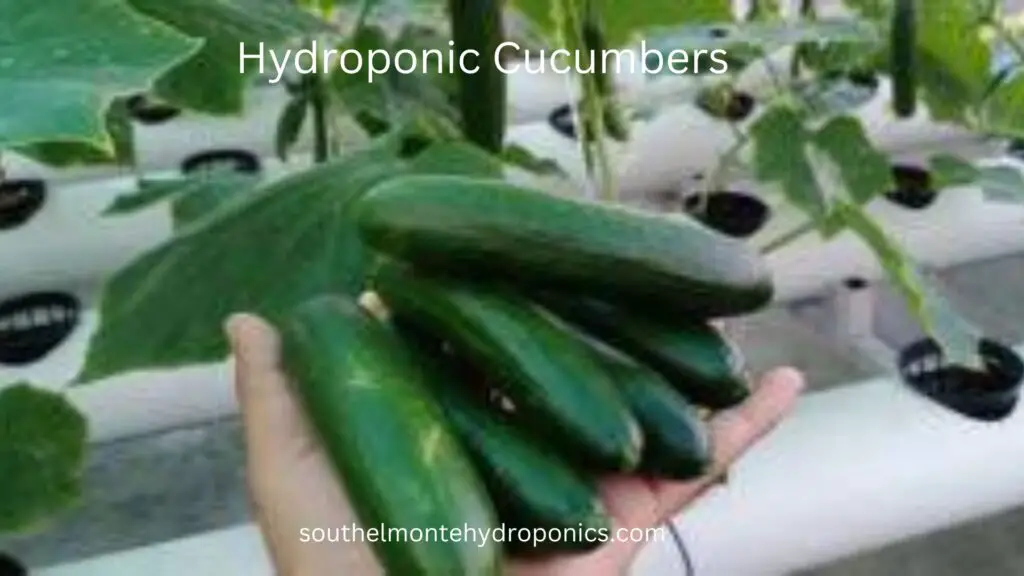
When it comes to harvesting hydroponic cucumbers, timing is key to ensure optimal flavor and freshness. Hydroponic Cucumbers should be harvested when they have reached the desired size, typically around 6 to 8 inches in length, and have a firm texture. It’s important to avoid letting cucumbers become overripe, as this can result in a bitter taste and mushy texture.
To harvest hydroponic cucumbers, gently twist or cut the fruit from the vine using clean scissors or pruners. Be careful not to damage the vines or nearby fruits while harvesting. It’s best to harvest Hydroponic cucumbers in the morning when their moisture content is highest, as this helps to maintain their crispness and flavor.
Once harvested, it’s crucial to handle hydroponic cucumbers with care to maintain their freshness. Immediately after harvesting, rinse the cucumbers with cool water to remove any dirt or debris. Avoid scrubbing the cucumbers, as this can damage their delicate skins. Next, pat them dry with a clean towel or let them air dry before storing.
To extend the shelf life of hydroponic cucumbers, it’s recommended to store them in the refrigerator. Place the cucumbers in a perforated plastic bag or wrap them in a damp paper towel to help retain moisture. Stored properly, hydroponic cucumbers can last up to two weeks in the refrigerator while maintaining their flavor and texture.
Maintaining freshness goes beyond the harvesting and storage process. It’s important to periodically check stored Hydroponic cucumbers and discard any that have become soft, discolored, or have an off-smell. Regularly inspecting and culling cucumbers will help ensure that only the freshest ones are used or enjoyed.
In the next section, we will explore additional tips and tricks for success in hydroponic cucumber production and address common challenges that growers may encounter along the way.
Tips for Success and Troubleshooting Common Issues in Hydroponic Cucumber Production
For successful hydroponic cucumber production, it is important to follow a few key tips and be prepared to troubleshoot common issues that may arise. One important tip is to ensure proper nutrient balance in your hydroponic system. Cucumbers require specific nutrients for optimal growth and it is essential to maintain the nutrient solution at the correct pH and EC levels. Regular monitoring and adjustments are necessary to ensure that the cucumbers receive the right amount of nutrients.
Another tip is to provide adequate support for the cucumber vines. As they grow, cucumbers can become heavy and may require trellising or other support structures to prevent breakage and ensure proper growth. Proper spacing between plants is also crucial to prevent overcrowding, which can lead to disease and poor air circulation. Regular pruning and training of the vines can also help to maintain a healthy and productive crop.
Despite careful cultivation, hydroponic cucumber gardens may face common issues such as pest infestations and disease outbreaks. It is important to regularly monitor for signs of pests and take appropriate measures to control their population. Integrated pest management strategies, such as introducing beneficial insects or using eco-friendly pest control methods, can help to minimize damage. Similarly, disease prevention measures, such as practicing good hygiene, providing proper ventilation, and regularly sanitizing equipment, can reduce the risk of disease outbreaks.
In conclusion, following these tips and being proactive in troubleshooting common issues can greatly contribute to the success of hydroponic cucumber production. By ensuring nutrient balance, providing adequate support, and effectively managing pests and diseases, gardeners can achieve healthy and productive cucumber plants in a hydroponic system.
What are the main benefits of hydroponic cultivation for cucumbers?
Hydroponic cultivation offers several benefits for cucumber production, including faster growth rates, higher yields, and reduced water usage compared to traditional soil-based methods. It also allows for better control over nutrient levels and pH, resulting in healthier plants and more consistent crop quality.
How do I select the right cucumber varieties for hydroponic growth?
When choosing cucumber varieties for hydroponic cultivation, look for varieties that are known for their high yield potential, disease resistance, and compact growth habits. Cucumber varieties specifically bred for greenhouse or indoor cultivation are often well-suited for hydroponics.
What is the appropriate hydroponic system for cucumber cultivation?
There are several types of hydroponic systems suitable for cucumber cultivation, including nutrient film technique (NFT), deep water culture (DWC), and drip irrigation systems. The choice depends on factors such as available space, budget, and personal preference.
How do I prepare and maintain the nutrient solution for hydroponic cucumbers?
To prepare the nutrient solution, you’ll need to mix the appropriate ratios of water-soluble fertilizers in a reservoir. Regular monitoring of the nutrient solution’s pH and EC (electrical conductivity) levels is essential to ensure the plants receive the right balance of nutrients.
How do I transplant cucumber seedlings in a hydroponic setup?
When transplanting cucumber seedlings in a hydroponic system, make sure to gently remove the seedlings from their nursery trays or pots, taking care not to damage the roots. Plant each seedling in its own growing site, ensuring proper spacing to allow for adequate airflow and growth.
What is the best way to manage light and temperature for optimal cucumber growth in hydroponics?
Cucumbers thrive in temperatures between 70-80°F (21-27°C) during the day and slightly lower temperatures at night. Provide them with a minimum of 14-16 hours of high-quality artificial light per day, using a combination of fluorescent, LED, or high-intensity discharge (HID) lights.
How can I control pests and diseases in my hydroponic cucumber garden?
Regular monitoring and implementing preventive measures are crucial for pest and disease control in hydroponic cucumber gardens. Use biological controls, such as beneficial insects, to manage pests, and maintain proper sanitation practices to minimize disease risks.
How do I harvest and maintain the freshness of hydroponic cucumbers?
Harvest cucumbers when they reach the desired size and color. Cut the stem just above the fruit, taking care to avoid damaging neighboring plants. Immediately after harvesting, store the cucumbers in a cool environment, ideally at temperatures around 50°F (10°C), to maintain their freshness.
What are some common issues that may arise in hydroponic cucumber production?
Common issues in hydroponic cucumber production include nutrient deficiencies or imbalances, root rot, pest infestations, and temperature fluctuations. Regular monitoring, proper maintenance, and prompt troubleshooting can help address these issues and ensure successful cucumber cultivation.

